Tam o' Shanter paintings get rare airing
- Published

She Flew at Tam wi’ Furious Ettle
A collection of 54 large paintings by renowned Scottish artist Alexander Goudie, depicting the story of Burns' Tam o' Shanter, are to go on display.
The paintings, completed in 1996 for the 200th anniversary of the Bard's death, have only been displayed in full once before, in Edinburgh that year.
The collection was almost broken up before being saved for the nation by a group of millionaires.
An exhibition will now show the full cycle in Ayrshire for the first time.
The paintings have been in the permanent collection of South Ayrshire Council since 1999 but it has never had enough space to display them alll.
The exhibition will take place in Rozelle House and The Maclaurin Gallery from Sunday until 12 March.
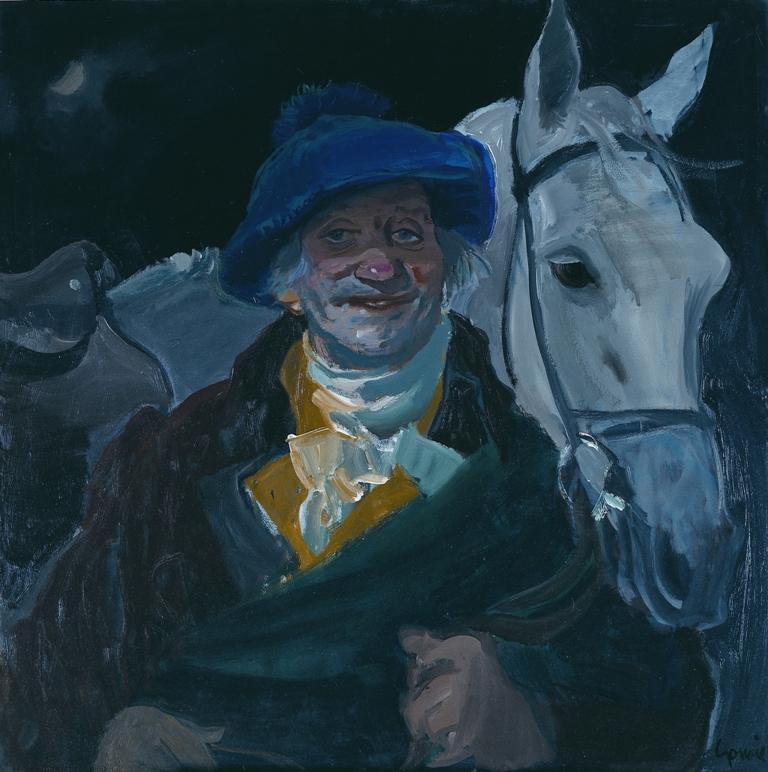
Tam o' Shanter
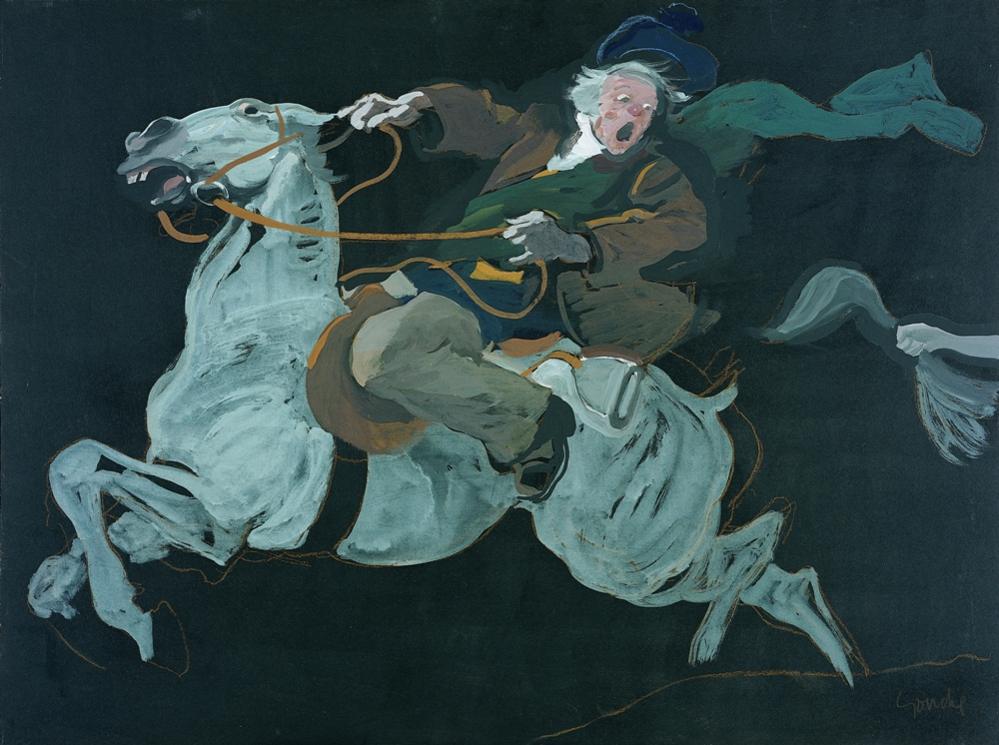
But left behind her ain grey tail
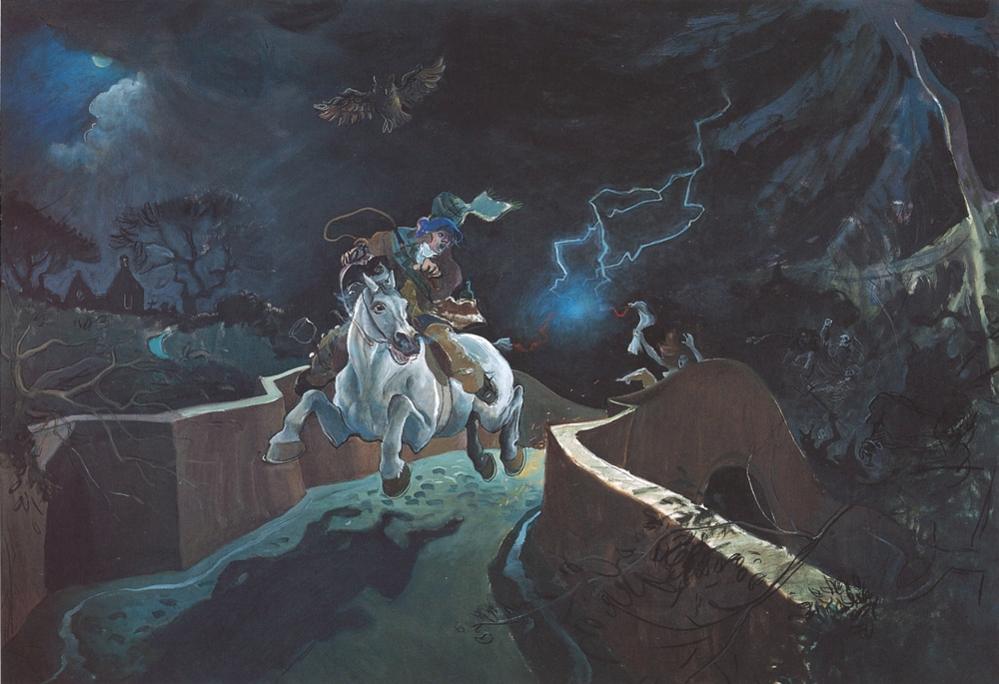
Hell hath no fury
Robert Burns' epic poem, written in the lowland Scots dialect of 200 years ago, is widely hailed as the Scottish bard's finest work.
It is was compared by Sir Walter Scott to Shakespeare's best work and is declaimed around the world at Burns' Suppers.
The 54 paintings by Goudie, who died in 2004, aged 70, represent each stanza in the poem as Tam makes his wild, drunken ride across the Brig O'Doon, to escape pursuing witches.
The Glasgow artist captures "a gothic tale, strewn with vivid and awesome images".

In Hell They'll Roast Thee like a Herrin'

Warlocks and Witches in a Dance
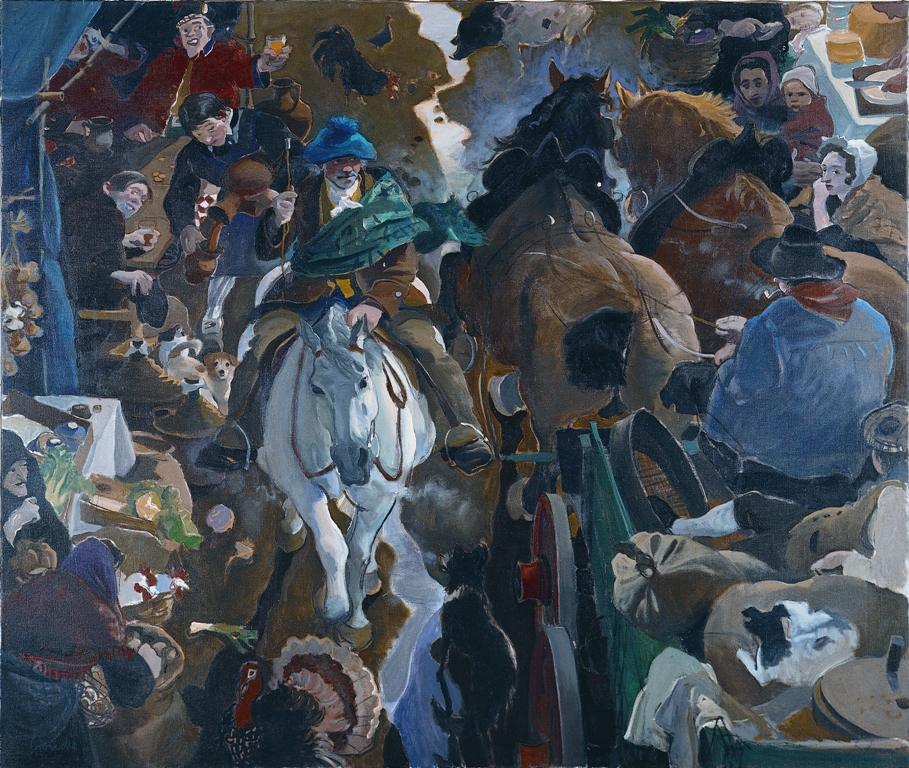
Riding into market
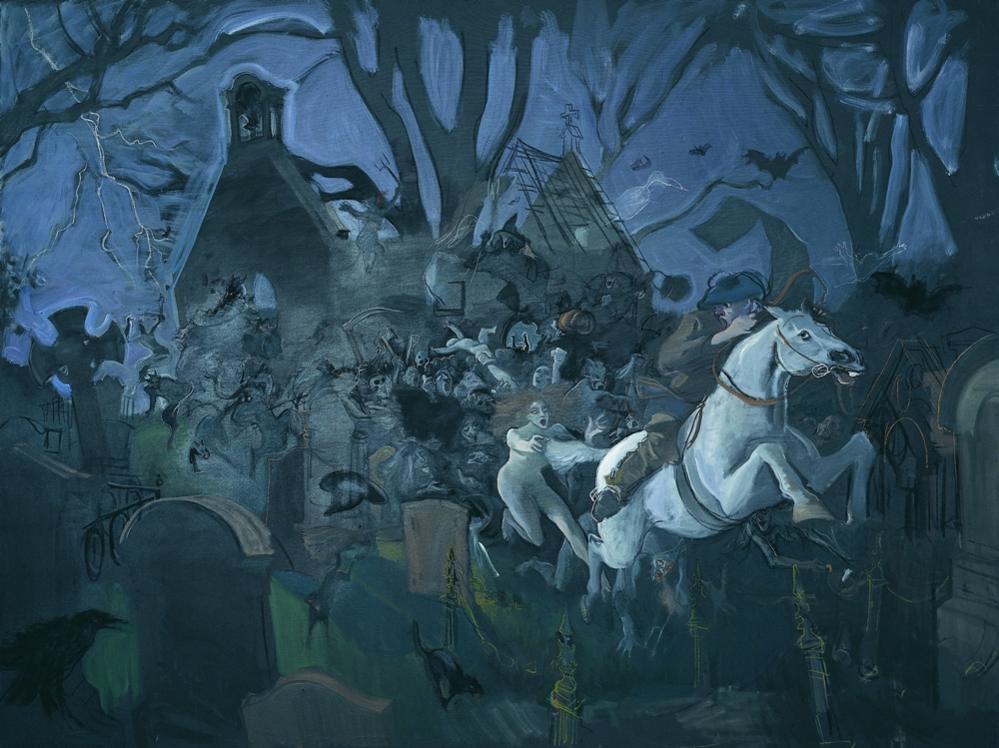
When Out the Hellish Legion Sallied
They were first shown at the Edinburgh Festival in 1996 and Timothy Clifford, director of the National Galleries of Scotland at the time, launched a campaign to buy them for the planned National Gallery of Scottish Art and Design in Glasgow, a millennium project that later stalled.
He had been hoping to receive about £680,000 in lottery cash and donations to purchase the paintings, which would have been the galleries' largest ever investment in a living Scottish artist.
The plan was immediately denounced as "a populist move" by Prof Duncan Macmillan, curator of Edinburgh University's Talbot Rice art gallery and the Scotsman's art reviewer.
He said the Tam O'Shanter sequence was "good illustration, but not great art" and criticised the mass purchase as "grotesquely out of proportion to anything that has ever been done for the nation's art before".
But Mr Clifford said the paintings had "that fire and enthusiasm that Handel must have had when writing the Messiah".

An Unco Sight
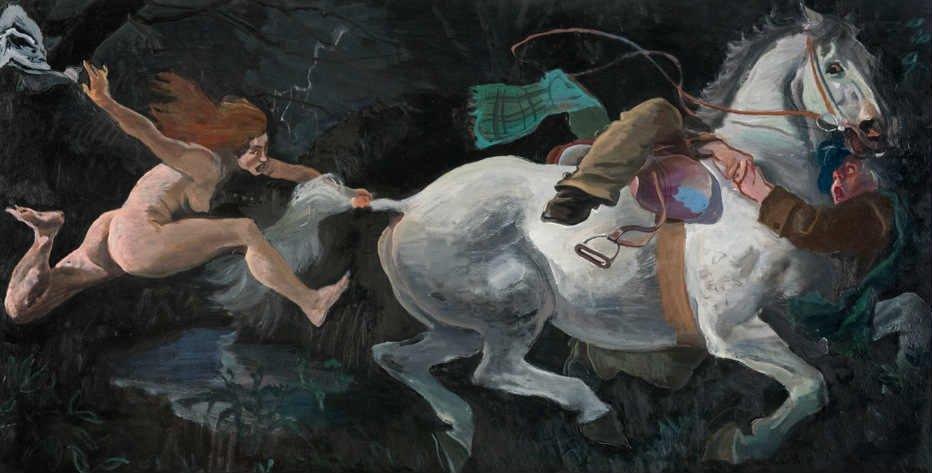
Caught by her rump
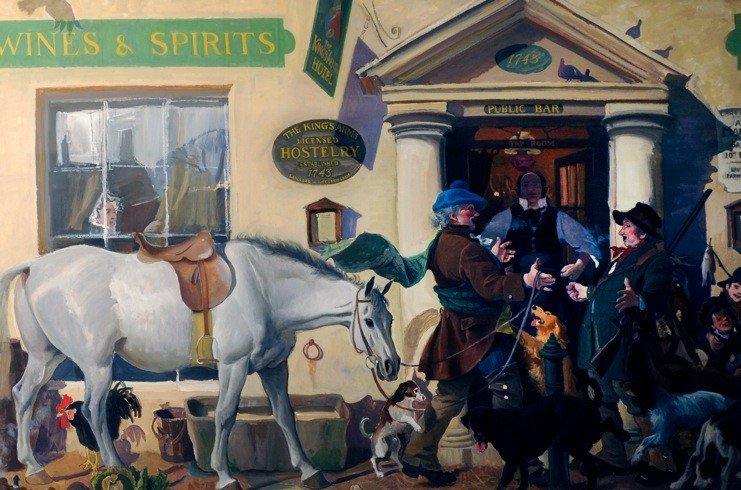
Drouthy Neibors Meet
Goudie himself said at the time: "All my life I've been supported by individuals, almost never by institutions."
He added: "I only hope the people of Scotland who are pressing this matter will not be put down by the opinions of one one or two members of the intellectual and aesthetic mafia."
However, when the plan to convert the Post Office building in Glasgow's George Square fell through, the artist was left with unsold paintings and they were in danger of being sold off in separate lots.
Legal wrangles ensued before Scottish multi-millionaires Brian Souter and Tom Hunter, with the help of the Hugh Fraser Foundation, intervened with £500,000 to keep the collection together.
They were donated to South Ayrshire Council and were to have a permanent home at the gallery in Rozelle Park in Alloway, a stone's throw from where the poem is set.
'Not to be missed'
A selection of the paintings has been on view in Rozelle House but the sheer size of the works will fill all the spaces at The Maclaurin Gallery and much of Rozelle House as well.
South Ayrshire Council said it was "a mammoth undertaking and a truly historic event not to be missed".
Lachlan Goudie, the artist's son son, says: "My dad was obsessed with Tam o' Shanter and he spent decades of his life creating these images.
"Since childhood he'd known about Robert Burns and it had been his lifelong ambition to create this complete cycle of images."
Mr Goudie, who is a painter himself, says: "He was painting Tam o' Shanter way beyond the point where my mother was shouting 'enough'.
"He was a professional artist and needed to make a living and my mother looked at these terrifying huge canvasses and thought 'we are never going to sell these paintings."
He says his father was "theatrical, noisy, hilarious and sometimes terrifying" and that is exactly what comes through in the paintings.
Mr Goudie says viewing the cycle turns the black and white text of the poem into the "most vivid fireworks that you can imagine".
The exhibition runs from 15 January to 12 March.